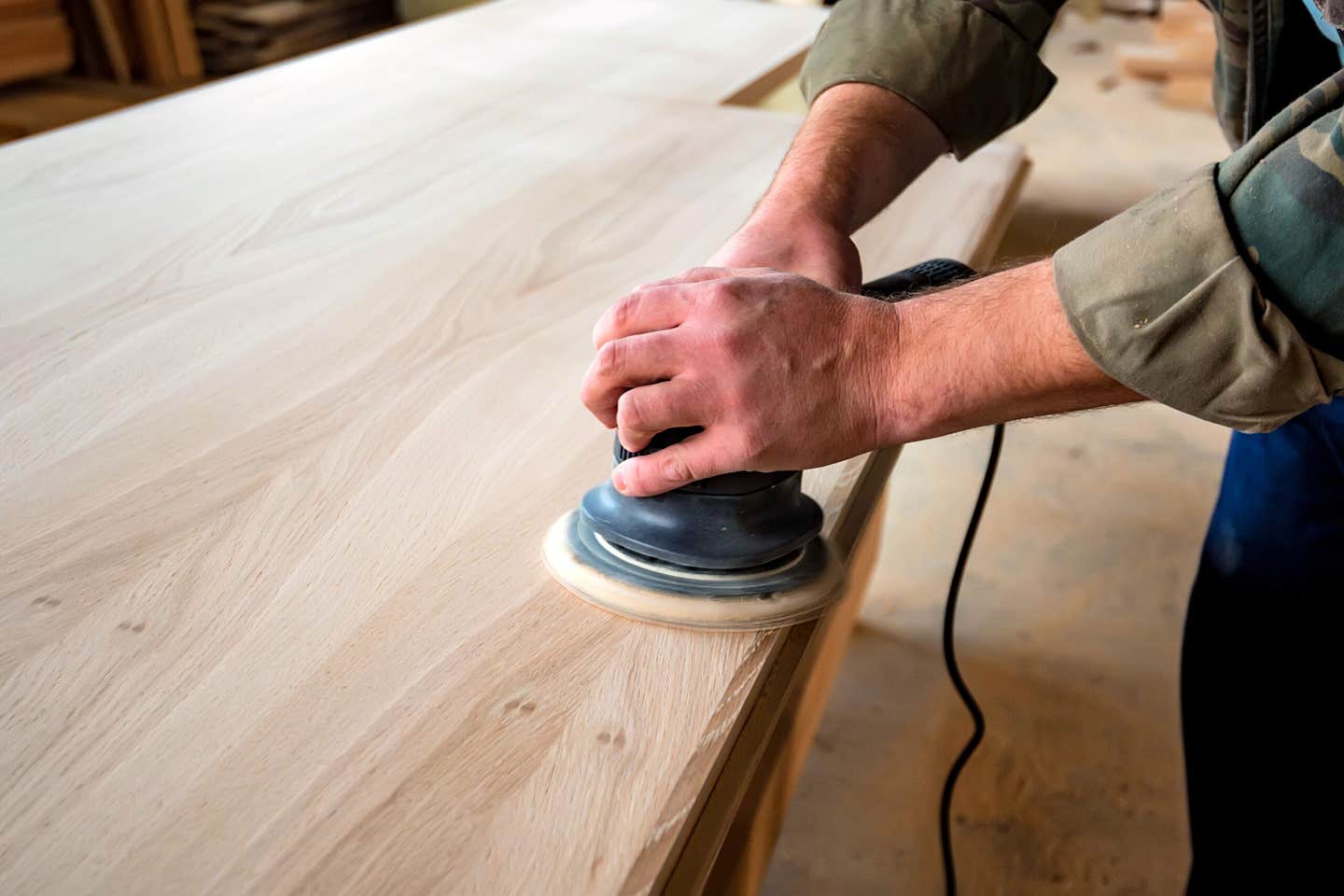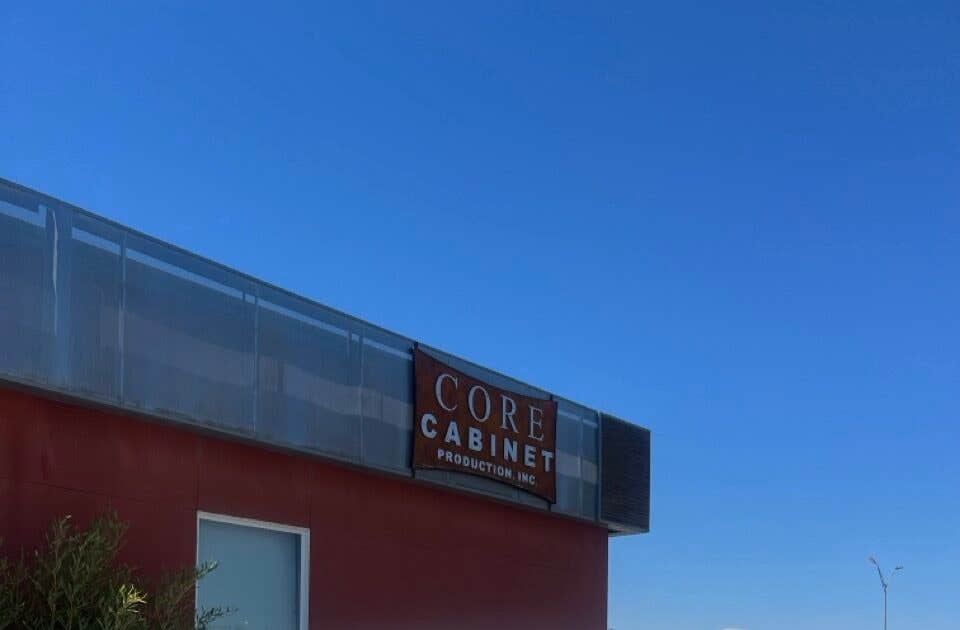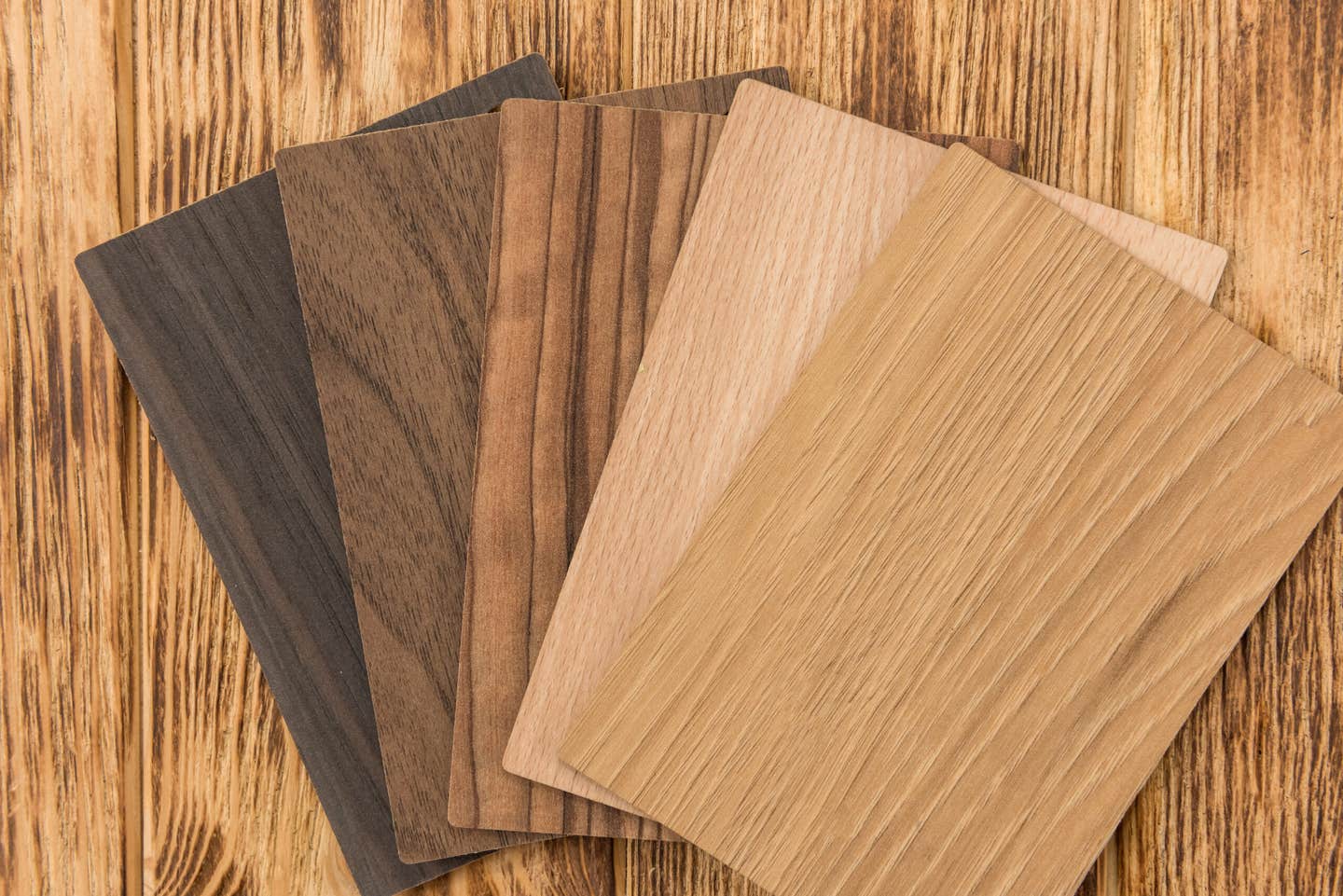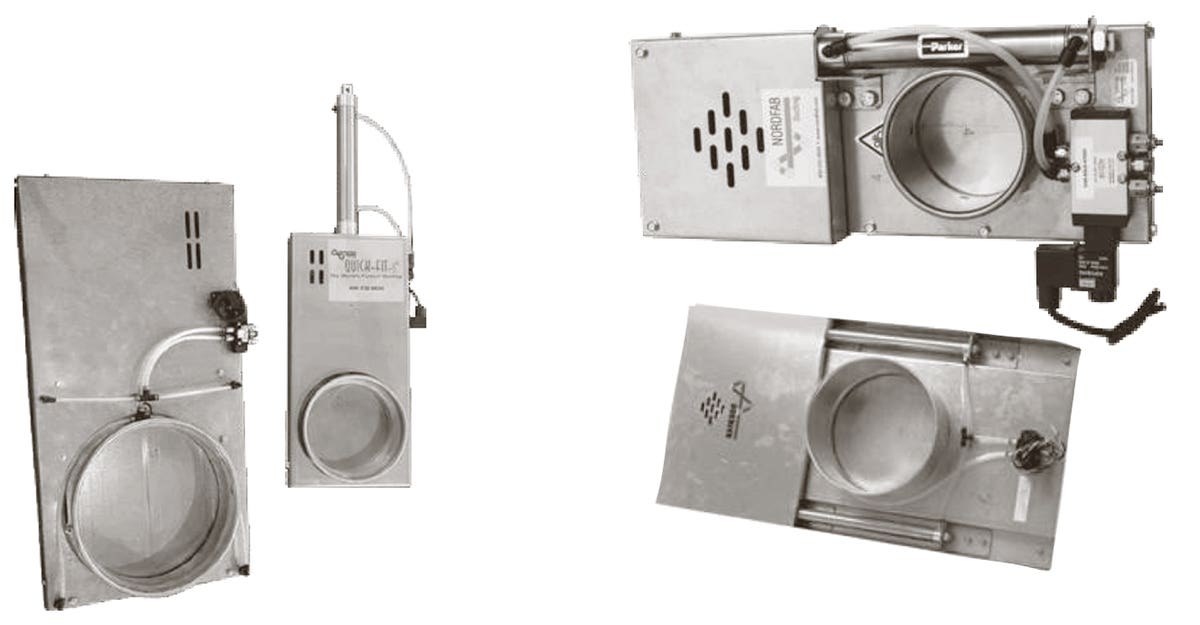Split the difference
A cross between traditional miter saws and radial arm saws, the sliding compound miter saw handles all the jobs those other tools used to do – framing, base and case,…
A cross between traditional miter saws and radial arm saws, the sliding compound miter saw handles all the jobs those other tools used to do - framing, base and case, crown molding, the works. While the blade ultimately determines the quality of a cut, the saws themselves offer a huge variety of features that affect the woodworker more than the wood.
{loadposition position10}
Almost everyone agrees that a 10" model is ideal for job sites and will tackle virtually any task its big brother can handle. However, there are times when that extra size comes in handy and there are benefits to going with a 12" machine that will spend most of its life in the shop. The larger machine adds an inch to the radius (and thus the depth of cut) and there is a very minor possibility of more runout with the larger diameter.
The key differences among these featured saws relate to their capacities. These include the maximum width and depth of cuts they can make, and the angles that the blade can be set to both miter and bevel. That's the "compound" bit. Beveling refers to tilting the blade to the left or right, while mitering means changing the angle of the path that the blade travels as it slides back and forth.
Other aspects such as ergonomics (how comfortable a tool is to use), weight and price are pretty important when making a purchase. So to help navigate through the myriad models available, we asked the major manufacturers to tell us about their latest saws. Nine companies responded and shared information on 14 saws.
Bosch 4410 and 5312
Very easy to adjust, both the 10" (4410) and 12" (5312) models have a miter lock lever up front that works well for people who have a problem grabbing round knobs. The bevel angles are printed in large enough numbers to read, and the four-position adjustable handle is a gift from the gods for extra tall, short and/or left-handed woodworkers. The micro-adjustment system allows for shimming a hair here and there as it has an override for the detents (that is, it doesn't slip back into the positive stops when you're trying to dial in half a degree). The top part of each fence slides out to support longer stock.
Both saws come with a 60-tooth carbide thin-kerf blade, a hold-down clamp and an innovative little stop on the right end of the bed for repeat cuts. Almost identical to the 10" model, the larger saw makes cuts in slightly wider and thicker boards. It only weighs four pounds more than the smaller unit and is 4-1/2" wider, making it a viable option for hauling to a work site.
One of the nice features on several of the surveyed saws (including both of the Bosch models) is a depth stop for cutting grooves. This adjustable stop allows the woodworker to mill a dado to a specific depth and width in several nibbled passes across a board.
Craftsman 21237 and 21239
The Sears saws are inexpensive and their construction seems less rugged than some of the more expensive models, but most customer reviews say that the saws are accurate and reliable. The ergonomics aren't particularly impressive and dust collection is rated as poor but, aside from that, they seem quite satisfactory.
One of the user reviews published by Sears on its Web site (regarding the 10" model) says a mouthful: "Pros: cuts wood, not that expensive, good for the weekend warrior. Cons: bad handle and safety switch, poor construction, cheap parts, not a pro tool." That's balanced by a second reviewer, who says: "This is a terrific value for the money. It performs as well, if not better, than other brands costing up to twice as much." Of 104 reviews, 90 gave the 10" saw at least four stars out of five and the same was true of 18 of 23 reviews on the 12" model.
DeWalt DW717 and DW718
As with most manufacturers, these two models are virtually identical except for size. They are designed for a hard life on the job.
The 10" unit (DW717) has the best-in-class crosscut capacity, allowing crosscuts of 14" wide material at 0 degrees and 12" boards at 45 degrees, which is ideal for laminated beams. Its tall fence and arm design also give it best-in-class vertical capacity, allowing 6" base molding and 6-1/4" crown molding cuts against the fence. The 12" model crosscuts 16" stock. An optional laser is available (DW7187) at a street price of about $70.
Festool Kapex KS120
The Kapex is twice the price of an average saw and most would say it's worth every penny. Not a tool for weekend work, this saw has been built with incredible detail, from the two lasers that light up both sides of the kerf to variable speed that allows the user to match the materials and thickness being worked for perfectly smooth cuts.
The Kapex has a geared knob that automatically stops the saw at various bevels (it actually has a rack-and-pinion micro bevel adjustment that's good to about 1/4 degree). The motor folds down to make the entire saw smaller when lugging it to the job site and the laser shuts down by itself after 30 minutes without use. The only possible downside to this saw (and it's very minor) is that the fences don't close right up to the blade to support delicate stock (but an auxiliary shop-built fence can fix that) and the included clamp is a bit too close to the fence. The clamp does have cam action, though, instead of endless threaded rod.
Also on the plus side, blade changes couldn't be easier or quicker. Turning a knob called the FastFix will lock the arbor, mechanically lock out the trigger and allow the blade to be changed with a single hand. And in the Festool fine-details tradition, a cupped steel arbor nut prevents accidental over-torque and damage to the saw or blade.
To maximize cutting height, the Kapex has a "special cutting position" that locks the sliding mechanism so it can be used like a standard chop saw on crown and other large moldings.
Hitachi C10FSH and C12RSH
Despite its ultra-modern looks, Hitachi's 12" sliding dual compound miter saw, the C12RSH, has been around since 2005 and has already earned a lot of respect from users. One of its nicest features is that it requires zero rear clearance, so it can sit close to the wall. The aluminum flip fence is tall (4-11/16") for crown molding and the saw has micro adjustment knobs on both the bevel and the miter. Miter cuts are 57 degrees right to 46 degrees left, and it bevels 45 degrees either way. A thumb-actuated lever controls positive stops.
Hitachi also offers the 12" model C12LSH with a digital LCD display for miter and bevel readings.
Even with its old-fashioned (for Hitachi) looks the 10" model very much mirrors the larger saw, with slightly smaller crosscut and height capacities. It has an electric brake and a slow start. We've used this saw in our shop for about four years and it has been completely reliable. Dust collection could be better, but the laser stays put and the saw delivers glass-smooth cuts with a Forrest blade.
Makita LS1016L and LS1216L
Introduced in 2009, Makita's 10" LS1016L saw is a very compact design, using four steel tubes to reduce the dimension front to back. It also features an innovative direct-drive gearbox and guard that combine to increase its vertical cutting capacity.
At 6-5/8", it has the largest crown molding cutting capacity (vertically nested) in its class, according to the company, and 4-3/4" baseboard cutting capacity (vertical). This is a very smooth saw with six linear ball bearings on the sliding mechanism. It has four sliding fences and it miters to 52 degrees left and 60 degrees right, with 10 positive stops. Beveling is 45 degrees left and right and there's a one-touch (push in and turn) miter lock system.
The LS1016L version of this saw has a built-in laser that works whether the blade is turning or not. The laser has its own switch and can be set right or left of the kerf. At 52.2 lbs, the 10" saw is fairly portable. (The 12" version is only 58.2 lbs.) The one-step blade change is a nice feature, as is the large trigger switch and the soft start motor with electronic speed control that maintains constant speed under load.
Almost identical, the 12" model has a larger cutting capacity for up to 8" crown molding (nested), 6-1/2" baseboard (vertical), and 15" crosscut at 90 degrees. On both models, front- and top-facing scales for bevel adjustments are easy to see and read.
Milwaukee 6955-20
A couple of things catch a woodworker's attention on this 12" saw. The first is a relatively simple control up front that locks the miter at 1/10" increments. Anybody who has ever mitered trim around a window knows how aluable that can be. There's a digital display that gives the angle in 0.1" readouts, so shaving a hair off a miter angle is very quick and simple.
The other interesting facet of this saw is a huge paddle-shaped handle on the top rear of the saw that controls bevels. It's hard to reach, but worth the effort. In one position it lets the saw swing freely through the complete left/right bevel range. In its next setting it lets the saw find and slip into the nine bevel detents (positive stops). And the third position locks the bevel at any angle. This saw also has a lamp on either side of the blade, which is a real boon on a framing or trim job where daylight or portable work-lights are the only sources of illumination.
Ridgid MS1290LZA
Ridgid's 12" saw is a real candidate for a shop-mounted miter saw, with lots of capacity and features, but it may be a bit too weighty (70 lbs.) to lug around the job site all day.
It can miter 2x10s at 45 degrees, has a built-in laser and a three-year warranty/lifetime service agreement. The worktop is generous, the clamp is well-positioned with a quick release and the fence is nice and high.
One nice little extra is a special surface that allows user to mark the fence for repetitive cuts. The throat is zero clearance and the miter detent thumbwheel is very simple and well-designed. If you're not close to The Home Depot it can be hard to find, but there's a retail locator at www.ridgid.com.
Ryobi TSS100L
A very economical choice, the Ryobi 10" miter saw comes with a spindle lock for easy single wrench blade changes, and both right and left table extensions for supporting longer work. Its 13-amp motor has an electric brake and runs fast (5,000 rpm), and the saw comes with a built-in laser guide. It can crosscut a 2x12 (or a 2x8 at a 45-degree miter).
Final thoughts
If the high-end saws are out of your budget, consider a factory reconditioned compound sliding miter saw.
These are tools that have been used thoroughly by repair technicians and aside from the odd dent or scratch (which will happen the first week on the job anyway), they are as reliable as brand-new models.
The only difference is the price and it can often be quite dramatic.
This article originally appeared in the June 2010 issue.







